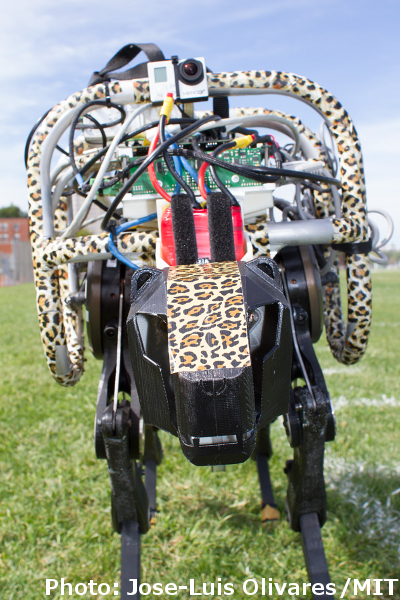Futuristic feline leaps to new level
 MIT’s robotic cheetah has had a software upgrade, and can now bound about in untethered freedom.
MIT’s robotic cheetah has had a software upgrade, and can now bound about in untethered freedom.
MIT researchers have developed an algorithm for bounding, which lets their robotic cheetah run and jump to clear objects in its path.
The sleek, four-legged assemblage of gears, batteries, and electric motors weighs about as much as its feline counterpart. It can now run up to 10 mph and continue its clip even after clearing a hurdle.
The engineers estimate that the current version of the robot may eventually reach speeds of up to 30 mph.
The key to the bounding algorithm was programming each of the robot’s legs to exert a certain amount of force at the exact moment it hits the ground, in order to maintain a given speed - the faster the desired speed, the more force must be applied to propel the robot forward (generally).
“Many sprinters, like Usain Bolt, don’t cycle their legs really fast... They actually increase their stride length by pushing downward harder and increasing their ground force, so they can fly more while keeping the same frequency,” MIT associate professor of mechanical engineering Sangbae Kim says.
By adapting a force-based approach, the team made its cheetah-bot able to handle rougher terrain, such as a grassy field.
Cheetah-bot owes much of its dynamism to custom-designed, high-torque-density electric motors, designed at MIT, which are controlled by amplifiers also designed in-house.
The special electric motors and controllers are attached to legs which were themselves inspired by the structures available in nature.
The team will present the bounding algorithm at the upcoming IEEE/RSJ International Conference on Intelligent Robots and Systems in Chicago.








 Print
Print